One of America’s most well-known military storytellers, Capt. Dale Dye’s personal war story began in 1964 when he enlisted in the Marine Corps. Over the next six years, he served multiple tours in Vietnam and earned the Bronze Star with V for valor as well as three Purple Hearts for wounds suffered in combat.
Retiring from the Marine Corps as a captain in 1984, he incorporated Warriors, Inc. the following year. This military/technical advising firm would present Dye with his next mission — bringing unyielding authenticity to Hollywood military-themed films and shows.
Dye’s first big production was his collaboration with fellow Vietnam War veteran, director Oliver Stone, in the Academy Award-winning 1986 film “Platoon”. Additional credits include “Last of the Mohicans”, “Saving Private Ryan”, “The Great Raid”, “Band of Brothers”, “The Pacific”, “Masters of the Air” and many more.

Dye’s work has not been limited to only being behind the cameras. Along the way, he has appeared in numerous films and television shows and is also a celebrated novelist. He is also a close, personal friend.
It’s truly a privilege and an honor to interview him for The Armory Life. Thank you, Capt. Dye, for taking the time to talk with us.
The Armory Life (TAL): Let’s start at the beginning. Tell us about your formative years and how they prepared you for the life you’ve led.
Dale Dye (DD): I grew up in Southeast Missouri and did a lot of hunting and fishing in the company of my family. I also devoured a lot of movies and books that fueled my fascination with the military experience.
My early influences were shaped by tales I heard from World War II vets. I hung on their every word, and I let my imagination run. I begged to be sent to military school. I don’t know how my family afforded it, but I got my wish and spent four formative years at Missouri Military Academy.

I excelled at the military aspects and sports — not so much at academics, which blew away my plans to attend the U.S. Naval Academy. I just couldn’t hack the heavy engineering stuff. Once I graduated, there was no money left for college and scholarships in those days were hard to come by, so I was faced with few prospects besides farming or factory work.
The military seemed like a natural choice. I pondered all the branches for a while in late 1963, but wound up choosing the Marine Corps for all sorts of adolescent romantic reasons. It proved to be the best decision of my young life.
TAL: You were considered a true grunt during the Vietnam War. While fighting a war is hard enough, you also had the responsibility of reporting on the conflict. Can you tell us about your work as a combat correspondent?
DD: In January 1964, the Marine Corps didn’t guarantee you anything but a challenge and a hard time. That’s what I was after, so I pleaded to become an infantryman. They granted my wish, and I trained as an 81mm mortarman for the first couple of years of my service.
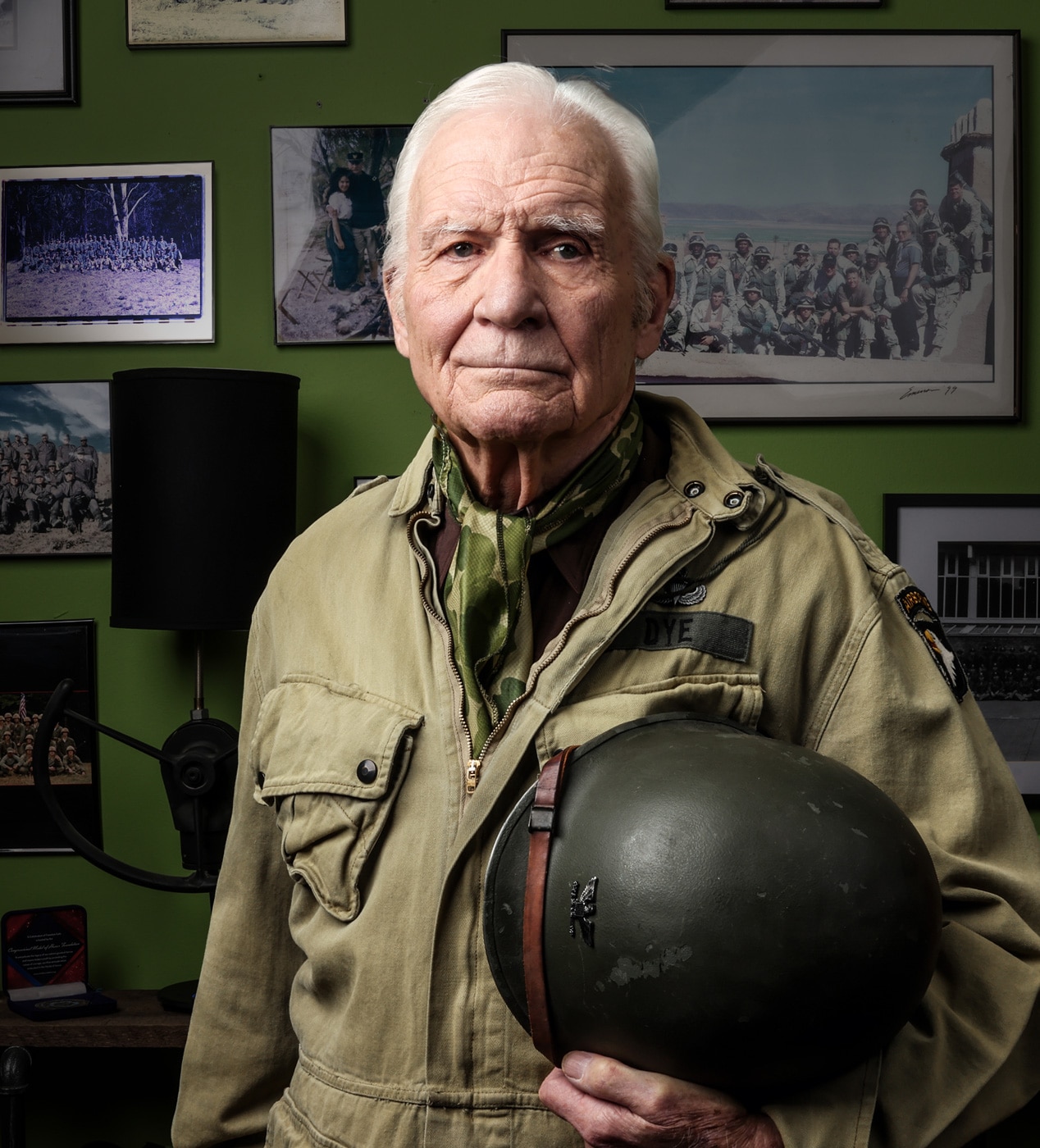
It didn’t take me long to get bored with that and, one day during a field exercise, I met another Marine who was walking around with a camera and a notebook. He told me he was a Marine Corps Combat Correspondent and indicated it was a dream job in which a good man could do practically anything the Marine Corps had to offer, assuming he could produce a story about the experience for internal or external consumption. The idea was to illuminate the varied and best aspects of the Corps. It didn’t take me long to realize this was a chance to see and vicariously experience it all, rather than being stuck doing one thing for four years.
The Marine Corps Combat Correspondent occupational specialty was a relatively tiny community in those days, and you had to prove yourself worthy of that kind of free enterprise in such a structured military environment. I had experience as an editor of my high school newspaper, a facility with language and a vivid imagination, so I finagled my way into the field.
At that point, I discovered that when they talked about a Marine Corps Combat Correspondent, the emphasis was on combat. As a newly promoted sergeant in the summer of 1967, I got orders to report to the 1st Marine Division in Vietnam.
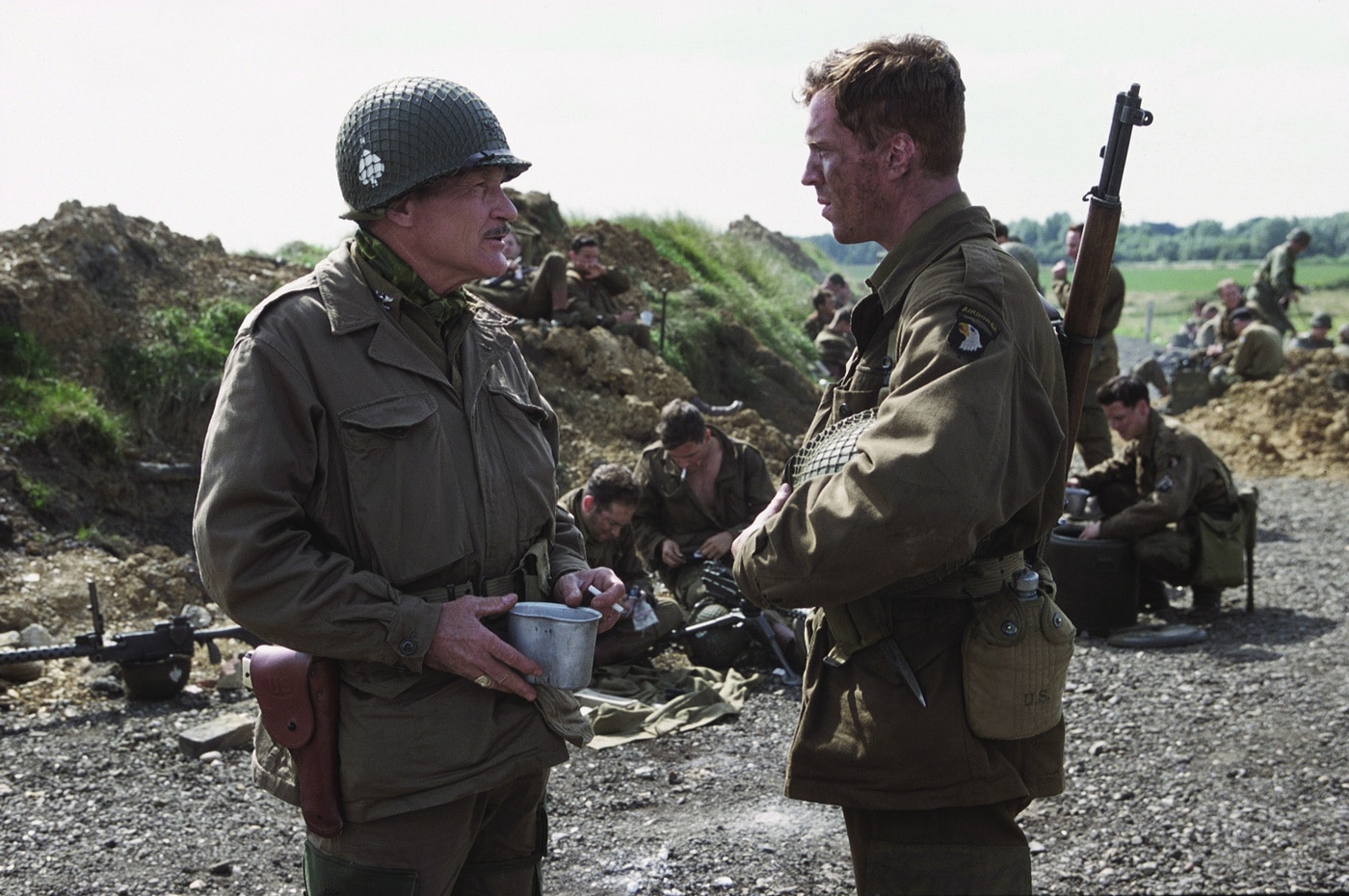
I quickly learned that the only way to properly do the job of reporting on and celebrating the little guy in the field facing the enemy was to be there, to run to the sound of the guns. And we were constantly on the move accompanying the grunts wherever they went. They might pull back to rest, but we were off on the next operation as there were so few of us to cover all the activity in I Corps. That sort of activity got a lot of us wounded several times.
We weren’t doing the major macro-level reporting on events of the war. There were plenty of civilian correspondents to do that. What we wanted were the human-interest stories, the heroism and tenacity of Rudy in the Rear Rank with a Rusty Rifle. Our material was sent to various overseas and stateside publications, and most importantly to the little hometown newspapers where a Marine’s friends and relatives could read it.
When the defecation hit the oscillation, we mostly operated to support where and when needed as augmentation to rifle squads or platoons. The key for us was never to be a burden and to always keep up, no matter how tough the slog. We wanted to show we were capable and willing to add firepower when needed.
I recall a guy from one of the outfits I ran with regularly telling me he thought I was a JAR. I thought he meant something like Jarhead, but he explained it was J-A-R … Just Another Rifle.
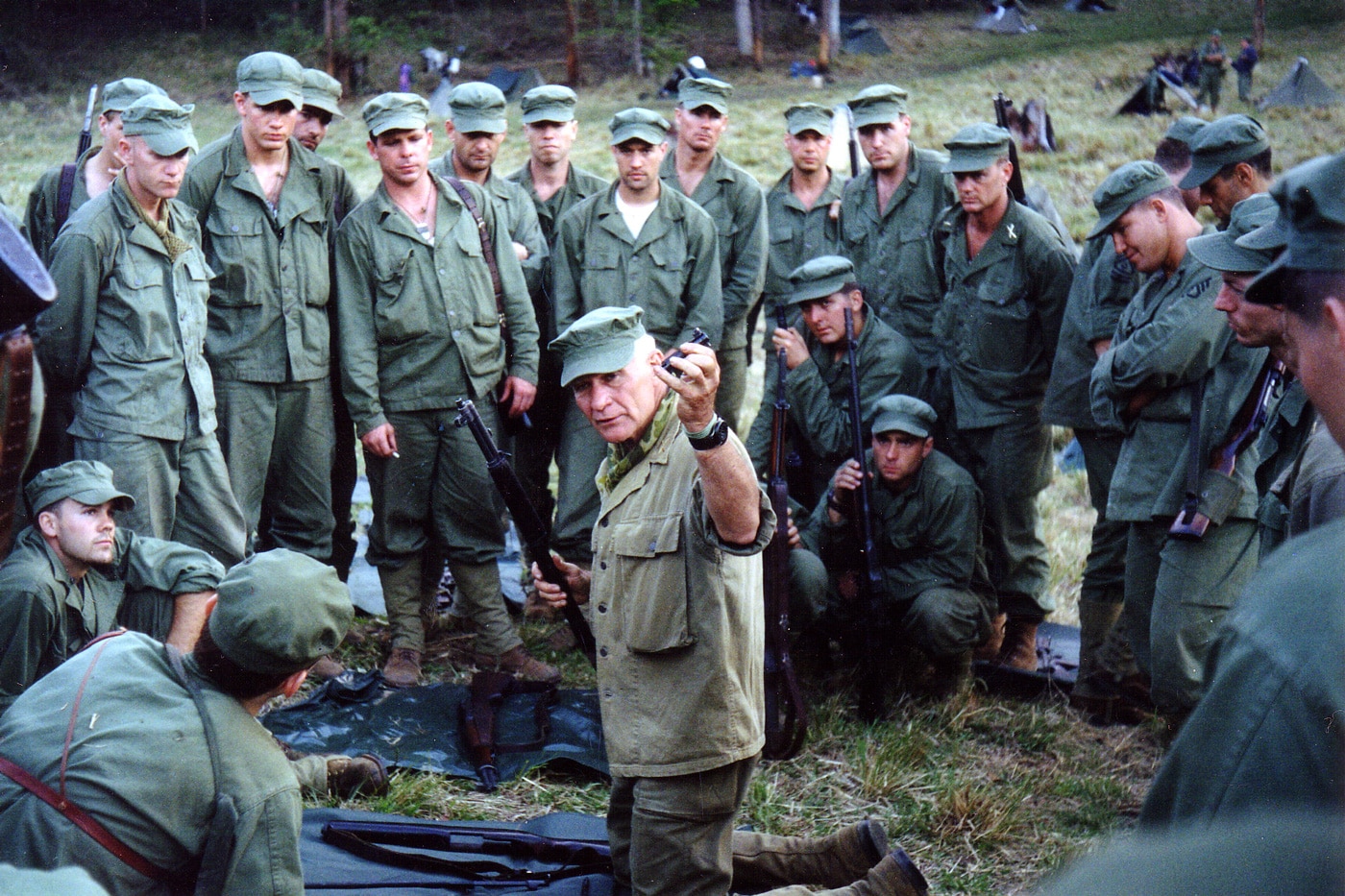
TAL: Nearly 50 years have passed since the end of the Vietnam War. What would you like to tell our readers to help them get a better understanding of that conflict, and the young Americans that were fighting in it?
DD: Likely no other war in America’s history has been as divisive and controversial as our experience in Vietnam. Ten bloody years of American sacrifice, leading to 58,000 killed in action. It was the beginning of an angry and enduring loss of faith in our government and in our military.
That’s as unfair as it is unfortunate. I’d like a younger generation of Americans to understand that those of us who fought in Southeast Asia — volunteers and draftees of all races, creeds and colors — did so because we saw it as a duty. We saw it as giving something back to a nation that nurtured us in freedom and patriotism. When you get down toward the bottom line, an entire generation of young Americans took the risk and answered when called. All the rest is white noise.
TAL: Over the years, you’ve made a consistent effort to educate people about the Marine Corps and the Battle of Hue in 1968. What do you see as the key factors that allowed the Marines to defeat the communist forces in that battle?
DD: Hue, during the Tet Offensive of 1968, was a seminal experience for those of us who fought there. These days we call that kind of urban combat MOUT, or “Military Operations in Urban Terrain”. I made up my own acronym: FISH, or “Fighting In Someone’s House”.
None of us had any experience with that kind of combat. We had been trained for and had experience in combat in heavy jungle, small villages or rice paddies. Now, we’re asked to move into a major city and winkle out two regiments of NVA and VC holding all the buildings and controlling the streets, not to mention occupying an old castle structure on the north side of the Perfume River.
It was a classic example of the Marine Corps’ timeless ability to adapt, innovate and overcome. It was learning on the fly, on-the-job training in a very bloody classroom, but we got it done. In my view — and the reason I’ve written and spoken so often about the fight in Hue City — it’s a tale that covers both the best and the worst elements of the human experience at war. It’s proof positive that there are no finer fighting men on earth than those who wear the American uniform, regardless of the circumstances or adversity involved.
We demonstrated that once again during the frustrating years our military spent in Middle East combat. When the military news gets really crappy, frustrating and disheartening, I think about the men I fought beside in Hue. It never fails to improve my outlook and bolster my morale.
TAL: After Vietnam, you spent some time in war-torn Beirut as a “mustang officer”. What are your reflections on your service in Lebanon with the Multinational Force in the early 1980s?
DD: Beirut was a very dicey time for all of us who served there as part of a “Multi-National Peacekeeping Force” that included French and Italian forces, and eventually the British as well.
We were originally sent over there to act as a sort of non-combat buffer between the Israeli forces and the PLO, who had been at each other tooth and nail for quite some time. Our avowed mission was to provide “presence,” which was nebulous at best.
In a war-torn and turbulent area, we were serving under all sorts of stupid rules of engagement that violated nearly every basic military principle. Everything from occupying the low ground around Beirut International Airport as opposed to holding the high ground surrounding it to no loaded weapons and all sorts of other rules imposed on us by diplomats with no military experience.
The bad guys — and there were so many of them in little violent factions around the city — quickly discovered we weren’t going to fight offensively or do things that might involve collateral damage to civilians, and that made us walking targets. That gave them a perfect opportunity to stick it to us without having to worry much about retaliation.
I stayed in Beirut through a couple of rotations. I was a mustang (former enlisted) captain by that time, and I could see it coming. We all knew by the spring of 1983 that we were cruising for a serious bruising as incoming incidents, rocket and artillery strikes and small ground engagements steadily increased.
I was fortunate to have rotated back stateside by the time the suicide bombing at the command post took place in October 1983, but I lost a lot of friends in that hit. In some ways, I believe it was a self-inflicted wound that could and should have been avoided.
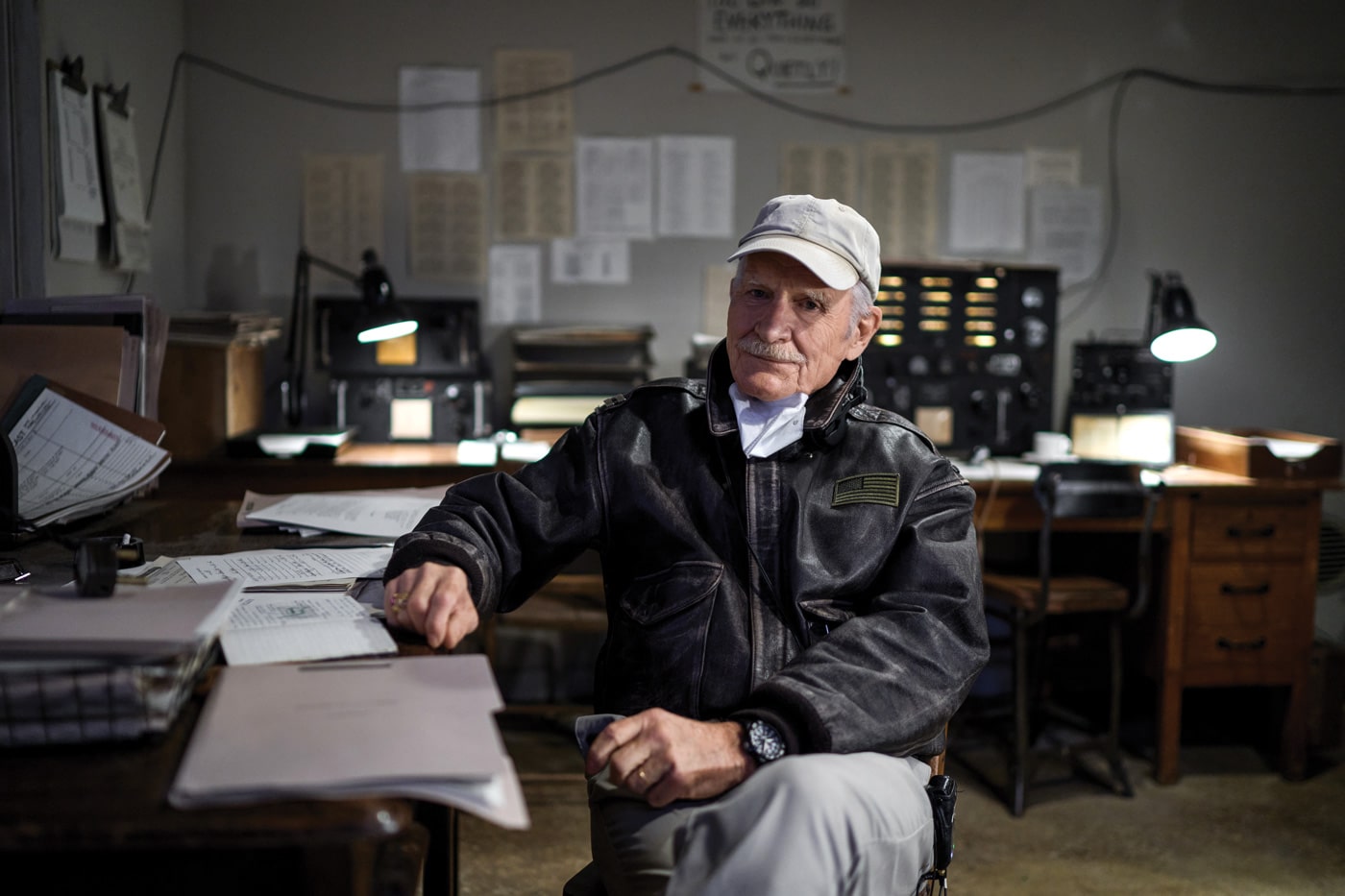
TAL: After 20 years in the Marine Corps, you “retired” into a very busy career in media, publishing and the movie industry. What was that transition like, and what challenges did you face?
DD: I expect this was driven by that little creative bug that has always lived somewhere inside of me. I’ve always been a storyteller — the guy who can keep you spellbound around a campfire with a long-winded story that really has no point but fascinates, nonetheless.
It’s a muse I guess, but the bug has always been with me, so I knew immediately when I decided to retire from active duty that my personal options were limited. I had no interest in being a regulation-bound law enforcement officer. If I went to work for some defense contractor, I’d be bored to death in six months.
What I needed was a creative pursuit. I’d finished a book and got it published just prior to retirement, so I thought maybe churning out novels would keep scratching the itch. But writing is a slow and intensely lonely experience, so I began to look around for something in addition.
One day, parked in front of the television watching Sam Fuller’s brilliant Korean War film “Steel Helmet”, it occurred to me that I’d seen practically every war or military movie there was. Without realizing it, I was a confirmed movie buff … especially anything to do with the military.
The more I thought about that, the more I realized that the common denominator was that most of the films I saw somehow wound up just pissing me off. They didn’t reflect what I knew as reality among soldiers, and about war in general.
I decided what Hollywood needed was a combat-experienced man with a better plan for making realistic military movies that all veterans could identify and empathize with. They needed me! And they needed my brilliant scheme to train actors in a realistic environment, just like we train our active-duty military people.
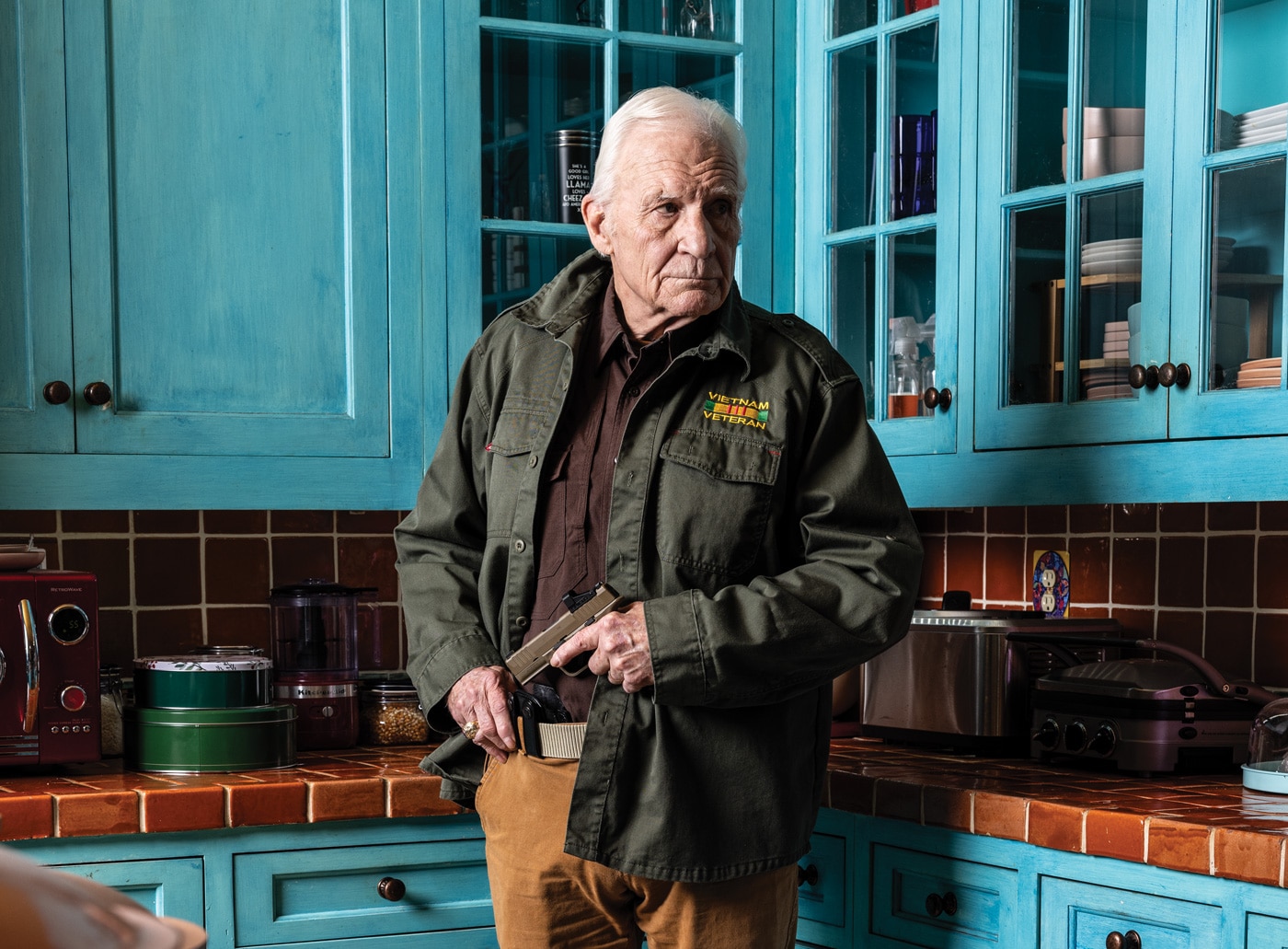
I’ve often discovered that when you’re ignorant like I was, you can do a lot of things smart people tell you can’t be done. So, I packed my seabag and headed for Hollywood.
TAL: Your desire to bring realism to war films was finally realized in Oliver Stone’s “Platoon”. When did your interest in film production get started, and how did you fight your way through the naysayers to make a breakthrough in Hollywood?
DD: Hollywood had been making war films for decades without my input and didn’t see any need to fix what they didn’t think was broken. I was trying to convince anyone who would listen (and there weren’t many of them) that I could improve the look and feel of war films and add to any actor’s portrayal of a soldier. They just needed to understand that a large portion of their potential audiences had military experience and knew the difference between reality and Hollywood fantasy.
That was a hard sell, particularly when I proposed putting pampered actors through an intense, hyper-realistic training experience prior to filming. For the most part, I was being written off as a no-talent, non-creative cretin who just didn’t get filmmaking. In reality, what I did get was storytelling — and in the end, that’s what a movie is. It’s telling a fascinating story through words and pictures.
I was about to give up in frustration when I noticed a small article in one of the Hollywood trade papers that indicated that a heretofore relatively unknown writer/director named Oliver Stone was about to make a Vietnam War movie based on his own experience as a combat infantryman.
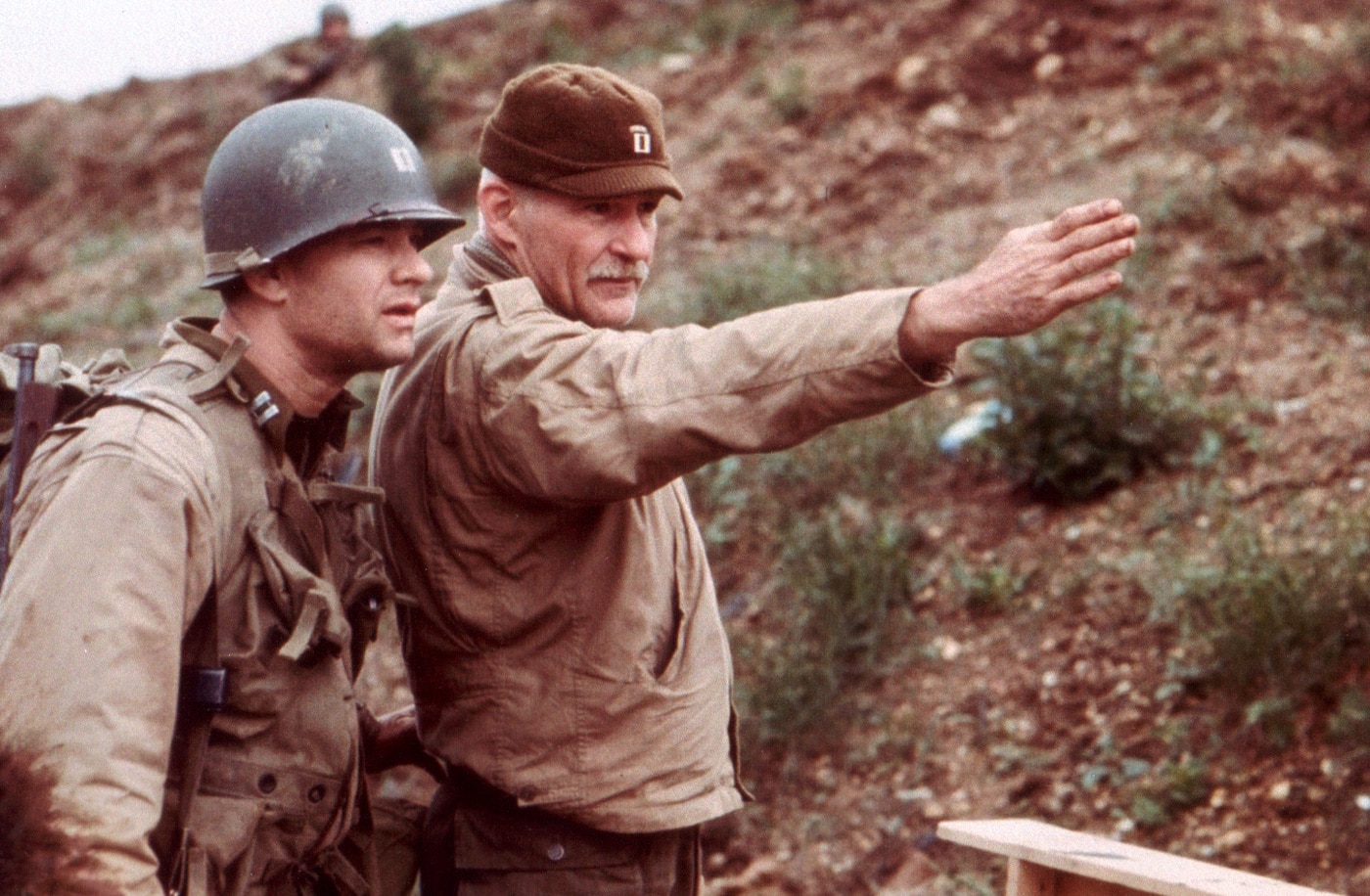
I won’t reveal how I pulled it off, but I managed to get a few minutes of Stone’s time in a studio and pitched my ideas. As I was hoping he would, Oliver understood what I wanted to do with his actors prior to shooting. I wanted them to look the part, feel the part, and most importantly, understand the Vietnam combat experience before they tried to portray it on film. He bought into it and gave me 33 actors to take to the Philippine jungles and train them for the film that would become “Platoon”.
TAL: Your realistic boot camp training sessions for the actors are legendary. How did they come about?
DD: Prior to my methods being broadly accepted these days, training an actor with no prior military experience was simply a matter of handing them the appropriate uniform, showing them how to handle a weapon, and then just letting them act. That’s why they call it acting, right?
It’s a recipe for disaster in my book. I wanted actors to understand the reality before they tried to act it. I wanted to train their bodies, starting with an introduction to incentive PT, but also give them insights into intellect and emotions that were completely alien to them.
The only way to do that in my view — as I refined my methods — was full immersion into the world of the grunt (or sailor, airman, etc.). So, as we do in training any military person, I adopted a crawl, walk, run approach over a series of days or weeks prior to shooting. When I say full immersion, I mean living in a hole they just dug, eating nasty field rations, and working all day and all night with absolutely no outside contact or distractions.
I want them to forget about making a movie completely, and I do everything in my power to keep them thinking and acting like the character they are bound to portray. Done properly with the right guidance, training becomes reality, and that reality comes through in their performance.
TAL: You’ve mentioned to me in the past that in certain cases some of the combat training you gave the actors had to be “unlearned” on the set to serve the needs of film production. Could you tell us a little about that?
DD: Once I had worked with an actor, you’ve hopefully got the actor-soldier doing everything just the way a real soldier would do it in combat. You’ve taught them about our black humor and our way of thinking under extreme stress. You’ve taught them about mission priority over self-interest, about trusting and relying on buddies who are relying on you. You’ve brought them to understand all the little quirks and kinks that mark the true soldier. You’ve taught them to handle combat reloads and throw grenades and all the other physical elements of combat, but the director wants something different for the camera.
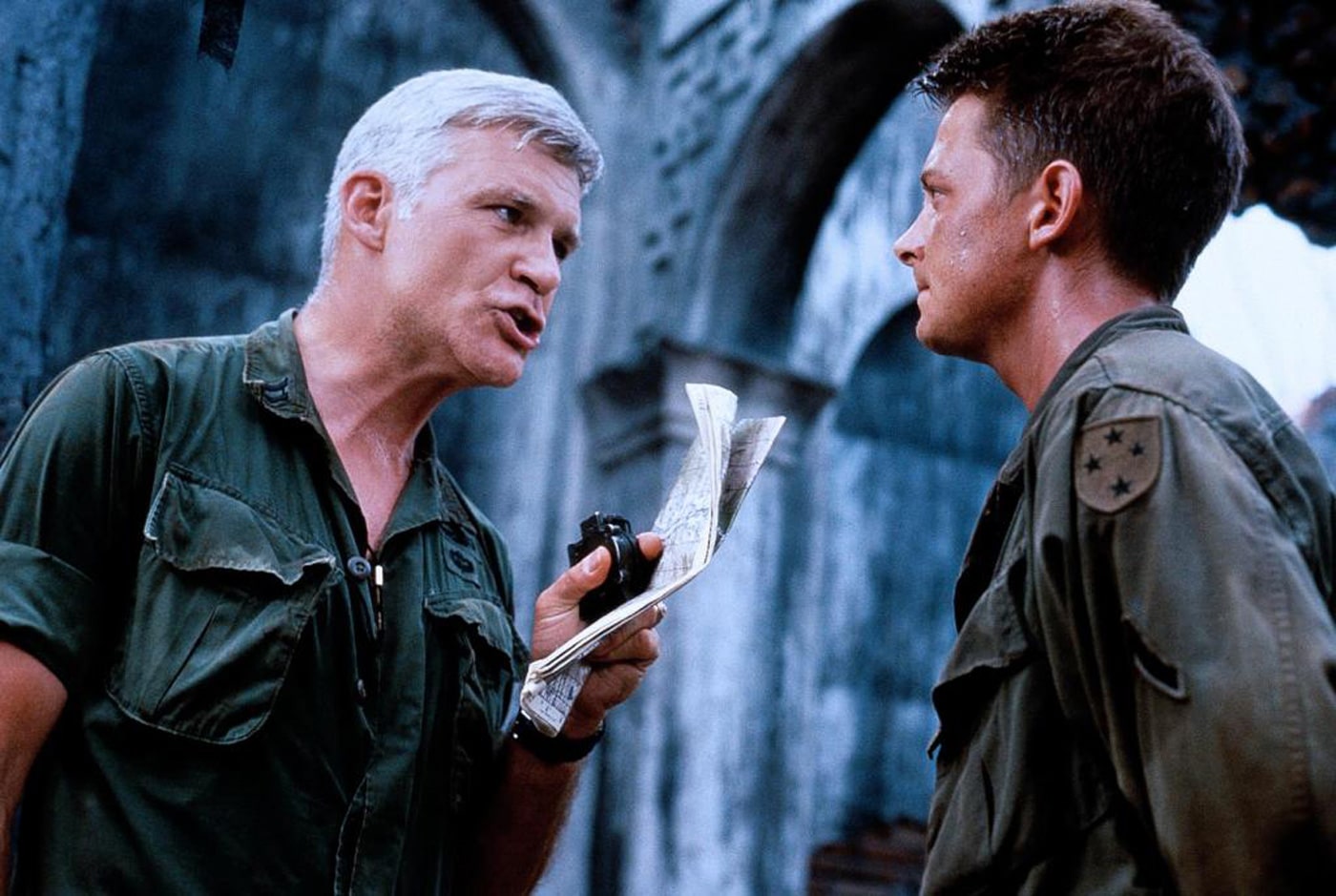
I’ve found the best way to handle that is to not get your skivvies in a twist and just say “no.” Say “yes, but” and suggest something as close as possible to reality that also meets their dramatic or cinematic needs. It usually works. Not always, but usually. And the more they come to view me as a fellow dramatist and filmmaker, the more likely they are to go along with my suggestions.
TAL: Just how badly did you wear out those young actors in the Philippine jungle as you prepared for “Platoon”?
DD: During training for “Platoon”, which was my first opportunity to exercise what the Hollywood establishment then thought of as radical methodology, I came to realize there are certain limits.
The key is to know where that line between realistic experience and stupidity lies and acknowledge it. I did that, walked that line, most of the time training on active duty, so I was familiar with how far is generally too far.
I also came to understand that serious actors — as opposed to wannabe movie stars — welcome that kind of challenge. Just like any military recruit, they are seeking a more in-depth understanding of the role they’ve been cast or enlisted to fulfill.
I push them hard, day and night, with little or no sleep, so they understand what it feels like during the real thing. I demand they carry the actual gear we often carried in combat, so their bodies become accustomed to moving fast under heavy weight. I let them modify their gear and uniforms the way we do with our stuff in combat. All of this leads to valuable insights that show up on the screen.
Of course, I believe in leading from the front. I never demand an actor in training do something I can’t demonstrate and accomplish first. In that way, they also learn a bit about leadership and military discipline.
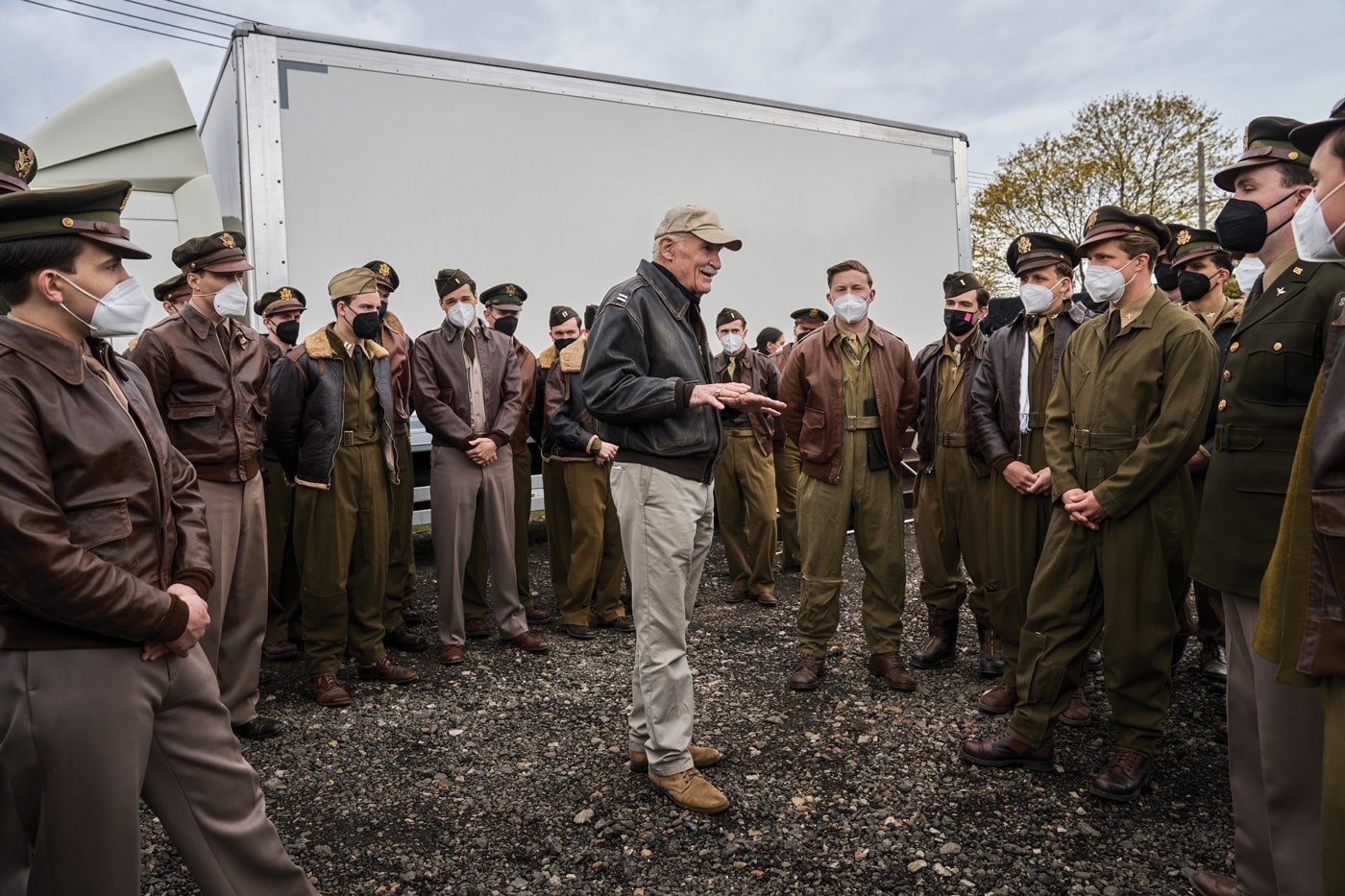
We trained for three weeks in the Philippine jungles prior to shooting on “Platoon.” The cast was exhausted when I brought them out of the bush, but they looked and acted like combat soldiers. We had some bumps, bruises and serious strains, but nothing that required evac or hospital treatment.
TAL: What has it been like to work closely with superstar actors including Tom Hanks and Tom Cruise, and to collaborate with directors of the stature of Steven Spielberg? Can you share a few of your favorite Hollywood stories?
DD: I’ve been fortunate to train and/or perform with some seriously big movie stars over the years, but I rarely think about them that way. There are no stars in my training outfits and no deference to standing or reputation. I run an equal-opportunity school of hard knocks.
To me during training, they are just recruits or new guys into the outfit that require attention. If they resist that selfless dedication, they are due for serious counseling, and I’m just the guy to provide it. I teach respect for the soldier and make them understand that soldier deserves appropriate portrayal. What I’ve found among serious actors who care more about the story than about themselves is that they welcome a certain subservience to the story being told.
With actors like Tom Hanks, Tom Cruise, Sam Jackson, Tommy Lee Jones, Willem Dafoe and a good number of others you’d instantly recognize, they are basically dedicated, very visual and dramatic storytellers. That makes us kindred spirits. And with directors, it’s much the same. Steven Spielberg is a history buff, as is Tom Hanks. They want to get it right.
TAL: What were your top five war movies produced before you got into the film industry?
DD: I mentioned Sam Fuller’s “Steel Helmet”, which I think is one of the best little war films ever made about Korea or any other war. Gene Evans gives a tour de force performance as grizzled Sgt. Zack. I would include “The Big Red One”, and practically any other war movie with Lee Marvin.
On the Navy side, I love “Run Silent, Run Deep”, “The Bridges of Toko Ri” and “The Last Detail”, in which Jack Nicholson demonstrates how sailors really wore their dixie cups and pea coats.
I really like “Patton”, but just for George C. Scott’s performance. The details are terrible. There’s another little gem titled “Soldier in the Rain” with Jackie Gleason and Steve McQueen that’s a peacetime Army standout. I’d also have to include “The Sand Pebbles”, but there are many more.
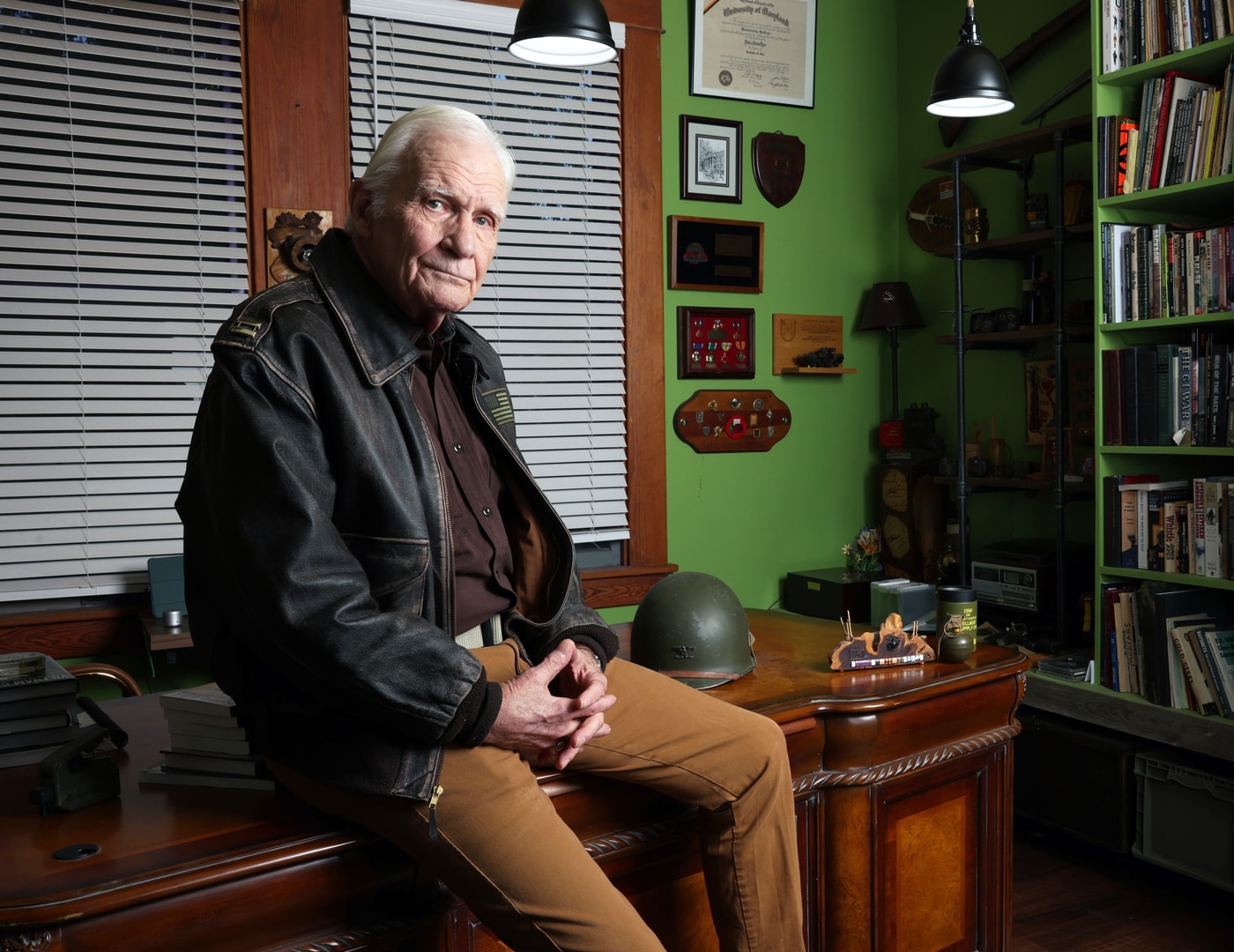
TAL: Without asking you to recite all your film and television credits as an actor, approximately how many roles have you had? Any particular favorites?
DD: Over the years, I’ve engineered roles for myself in movies I’ve worked on as a military advisor. Usually, when I read a script, I’m on the lookout for something that might fit my chops as an actor. I enjoy working in front of the cameras. I guess it’s that creative bug biting the hell out of me.
Without an actual count, I’d suspect I’ve played roles in about 40 or more films and television projects. Some say I’m the most type-cast guy in Hollywood, alongside my good friend, the late R. Lee Ermey. I love to do comedy, but don’t get much chance to show that side of my personality.
I love the chance to portray actual characters from history, so I’ll always fondly remember my time as Col. Robert Sink in “Band of Brothers” and Col. Leonard Wood in “Rough Riders.”
TAL: Before Hollywood, you transitioned from combat correspondent to fiction writer. What was it like to write your first book? Would you describe that as a cathartic experience?
DD: My first book, “Run Between the Raindrops”, was actually completed before I retired from active duty. As it’s about my experience during the battle for Hue City, I’d certainly have to admit it was cathartic. Some of my worst nightmares were memories from fighting in Hue, and writing or talking about them just seemed to make it all less scary and psychologically constipating.
That first book met with some critical success, so I continued to write. As I’m looking at my bookshelves, I see about 15 books I’ve written over the years. Blame it on the muse or the bug, but I deep down do love the lonely business of banging around on a keyboard, imagining and describing, creating worlds or events that I can share with others.
I’m an avid reader. When I’m not doing anything else, I’ve got my nose buried in a book or a Kindle. That pursuit often provides fodder. I’m fascinated by something I read, and then a concept forms, and I’m prompted to transfer my idea or an image from my brain to paper or screen. Eventually, it becomes an article like you might see in The Armory Life, a book or a screenplay.
[Be sure to read Dale Dye’s articles on The Armory Life.]
TAL: How did Warriors, Inc. come about?
DD: Once we became the in-demand consultancy for military-themed films and television projects following the Academy Award success of “Platoon”, I realized I needed to get organized. I couldn’t do all the work as a one-man band.
That’s when I started to vet and build a Warriors cadre with fellow Marine Mike Stokey at its core and incorporated as Warriors, Inc. That allowed us to do more than one production at a time while keeping our standards high.
We have now expanded to broader worldwide horizons and reorganized as Warriors Global. There’s a certain mystique that comes with having Capt. Dye and Warriors working on a production, and I’m happy to capitalize on that. We have built an outstanding reputation in the film and television community.
TAL: It seems that your wife Julia Dye is just as much of a historian as you are. How did you two meet?
DD: Julia and I met when she was working as a featured member of the cast on “Starship Troopers.” She was one of the first and few females we’ve taken to the field for training on a movie. She was and is a fascinating character as well as a talented and kindred spirit. There’s much more to the story, but she tells it better than I do.
Julia Dye: When we first met, it wasn’t love at first sight — the film was just not a particularly romantic setting — but I did get an overpowering sense that this man was going to be important to me.
Dale was surprised by my Ph.D. in Hoplology (a combination of military history and anthropology), and we found a lot of arcane interests in common. After surviving a first-night blizzard, a tough training period, and a long and challenging shoot, our relationship developed from professional respect to best friends. Later, we fell in love.
Not a bad way for a relationship to progress.
TAL: Dale, let’s talk about firearms and shooting. What are your favorite types of recreational shooting, and do you get much trigger time?
DD: I love shooting and have as long as I can remember. Not only am I a certified weapons nut, but I’m a pretty fair hand with pistols and long guns alike.
I tend to specialize in military-style firearms. I’ve got a pair of vintage M1 rifles, an SMLE and a Kar 98k in the safe along with a war trophy Moison-Nagant that I brought home from Vietnam.
I enjoy taking young shooters who have only seen a Garand in movies or on television out to the range and see them first struggle with an en-bloc clip and then bang away like G.I. Joe or Sgt. Rock. Just shooting these old warhorse weapons keeps me humble and in the right mindset for my work. I’ve got a rack full of military pistols that are fun to shoot as well, including a parrot-beak-handled Webley in .45 ACP and a broomhandle Mauser.
And shooting regularly is imminently easier here in Texas than it was when I was in LA. Folks in Texas understand and respect individual freedoms, and that includes the right of self-defense. Guns of all types are all over the place and you don’t see people running to the fainting couch at the sight of one. It’s inspiring and refreshing.
TAL: What can you tell us about shooting your Springfield Hellcat Pro?
DD: When I started writing for The Armory Life, I became very curious about Springfield Armory’s offerings and began reading and watching videos on the site. One of the things that caught my eye was the Desert FDE Hellcat Pro in 9mm. It just seemed to have all the right stuff, particularly for concealed carry. The guys were kind enough to send one along for me to shoot, topped off with a Shield SMSc red dot optic, and I promptly did just that.
It’s a beauty. Great ergonomics and completely controllable in quick double-taps. And it’s one of the first truly comfortable pistols I’ve found for concealed carry, coupled with a nice leather Galco IWB holster. I’m now regularly walking out with it in an appendix carry position. That little gun is a winner even for a guy who loves Old Slabsides!
TAL: Do you have any other projects that you’d like to talk about?
DD: I can tell you that I’m working diligently on my autobiography. I can’t provide you with a specific publication date, but I’ll have it done as soon as possible. It’s slated for release through Warriors Publishing Group, and you’ll be able to read my whole story not too far down the road.
TAL: Thank you for taking the time to give us this fascinating insight into your life. I’m sure our readers will appreciate getting to know more about the man whom they have seen in front of the camera all these years, as well as the one behind it making sure their favorite military-themed films and shows are as realistic as they can be.
DD: It was my pleasure. Looking back over a lot of years and a lot of work on productions, I hope some of that has improved and increased the way audiences see the military and the experience of combat. Some say I changed the way Hollywood makes war and military movies. That would make a fine epitaph.
Editor’s Note: I had a chance to chat a bit with Capt. Dye about Warriors Publishing Group, a publishing arm of the current Warriors, Global advising firm.
The company’s purpose is to bring military veteran authors and engaged readers together, telling the stories that help us appreciate the service and sacrifice of those in uniform. Capt. Dye himself has numerous titles published here, with the fictional Shake Davis series of books standing out in particular.
Focused on Shake Davis, a retired Marine officer with lots of SpecOps experience, the series has the protagonist traveling the world, continuously plunged into dark and dangerous places. Many of these locations have a connection to Marine Corps history.
Dye explained that he bases the characters in the books on people he either knew or served with as a sort of homage. Shake’s best buddy in the books is his real-life best friend, Mike Stokey. Dye first met Stokey during his time in Vietnam, and they have been friends for half a century. Stokey is also the XO of Warriors, Global.
Be sure to visit the Warriors Publishing Group website to check out not only the Shake Davis series, but the whole host of available military-themed books.
— Mike Humphries
Editor’s Note: Be sure to check out The Armory Life Forum, where you can comment about our daily articles, as well as just talk guns and gear. Click the “Go To Forum Thread” link below to jump in!
Join the Discussion
Featured in this article
Read the full article here




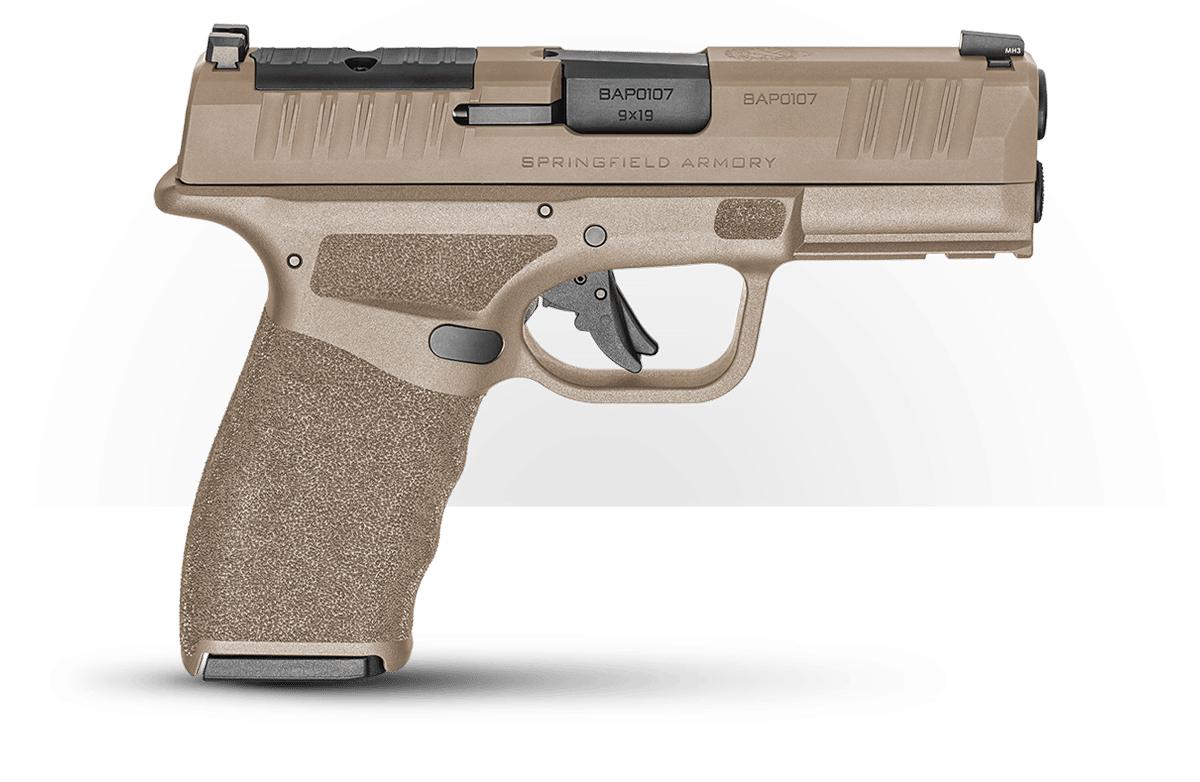

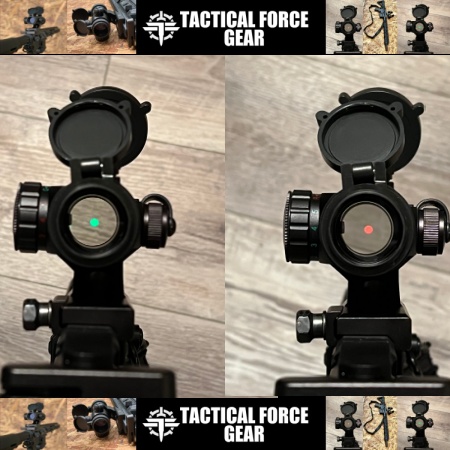
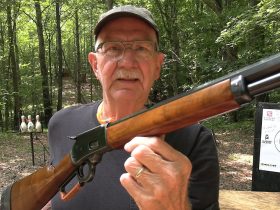
Leave a Reply